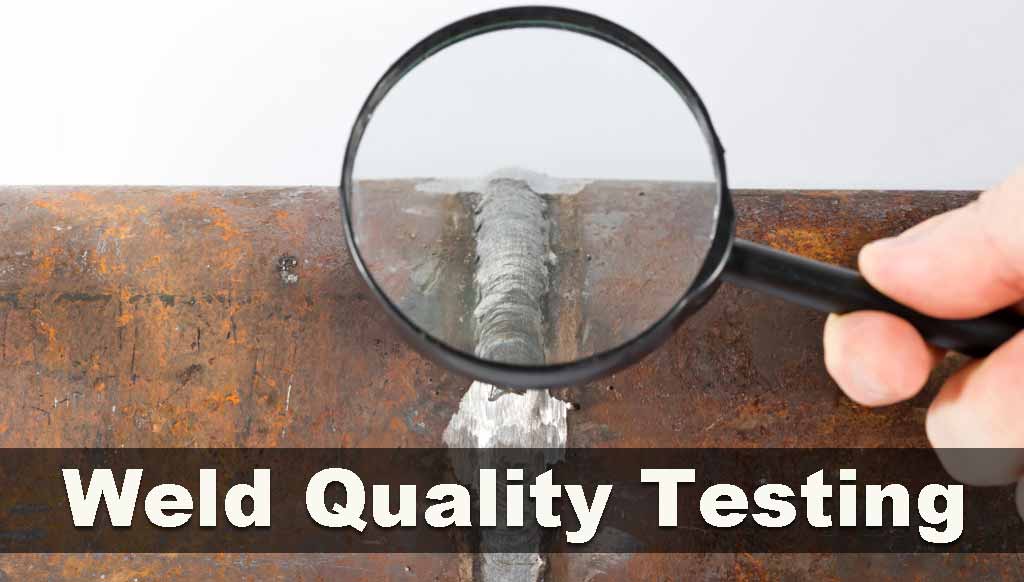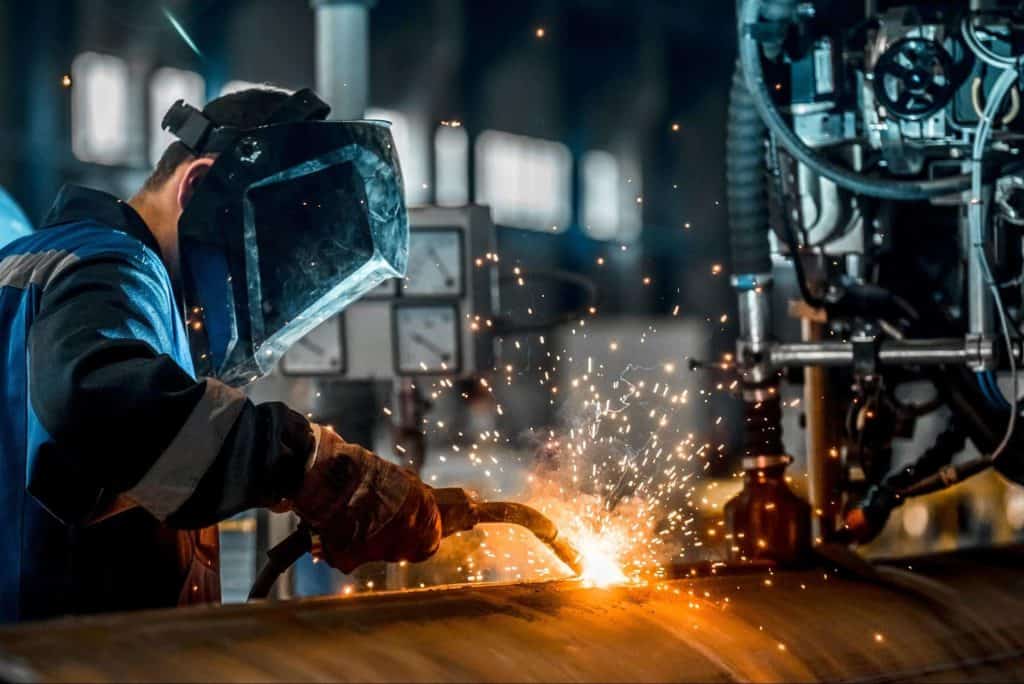The Influence of Extensive Welding Inspection on Industry Specifications: Supporting Safety And Security, Dependability, and Conformity Across Different Sectors
The function of strenuous welding evaluation is progressively identified as a crucial component in boosting sector requirements, where reliability, conformity, and security take priority throughout diverse industries. What changes might we prepare for in welding methods as the demand for top quality and security heightens?
Relevance of Welding Examinations
Identifying the important function of welding assessments in maintaining high quality and safety standards, sector experts focus on these evaluations to ensure structural integrity. Welding inspections offer as a vital checkpoint in the construction process, identifying issues that might endanger the resilience and security of bonded structures. By methodically analyzing welds, assessors can discover issues such as incomplete infiltration, porosity, and fractures, which might not be visible to the naked eye.
The relevance of these evaluations prolongs past plain compliance; they are necessary for safeguarding lives and securing investments. In important industries such as production, aerospace, and building, a solitary faulty weld can lead to tragic failings, causing both financial loss and human casualties. For that reason, implementing rigorous evaluation protocols reduces these dangers and boosts total task integrity.
In addition, regular welding examinations promote a society of high quality across organizations, motivating welders to comply with ideal methods and preserve high standards in their work. This dedication to high quality not only improves functional performance but also enhances the track record of business within their respective markets. Hence, welding examinations are vital in advertising security, integrity, and conformity throughout numerous industries.
Trick Market Standards and Regulations
The structure of welding assessments is underpinned by a robust collection of market criteria and policies that control methods throughout different fields. Key establishments, such as the American Welding Society (AWS) and the International Company for Standardization (ISO), establish guidelines that guarantee top quality and security in welding procedures. For circumstances, AWS D1.1 lays out crucial requirements for welding steel frameworks, while ISO 3834 defines high quality requirements for fusion welding.
In addition to these certain criteria, sector laws like the American National Requirement Institute (ANSI) and Occupational Security and Health And Wellness Administration (OSHA) mandates further enhance conformity by establishing safety procedures and functional finest methods. These policies are essential in markets such as aerospace, production, and building, where welding stability is vital.
Moreover, sector-specific criteria, such as those from the American Culture of Mechanical Engineers (ASME) for pressure vessels, supply extra layers of examination to make sure that welds meet strict safety and efficiency requirements. Adherence to these standards not only facilitates governing conformity yet also cultivates a culture of quality and dependability across the welding industry, inevitably protecting public well-being and improving operational performance.

Benefits of Conformity and Reliability
Continually sticking to sector standards and regulations in welding assessments returns substantial benefits, boosting overall dependability and performance. The leading advantage is the guarantee of quality in bonded joints, which directly contributes to the security of structures and equipment. Compliance with well-known standards reduces the risk of failing and catastrophic cases, thus safeguarding both human life and valuable possessions.
Furthermore, companies that prioritize rigorous welding evaluations promote a society of liability and professionalism and reliability. This commitment not only strengthens the track record of the business yet likewise browse this site imparts self-confidence in stakeholders and customers relating to the honesty of product or services. Reputable welding processes lead to lowered expenses connected with rework, repair services, and prospective lawful liabilities coming from subpar workmanship.
Furthermore, maintaining conformity with sector criteria facilitates smoother regulatory interactions, as companies can conveniently show adherence to necessary procedures (Welding Inspection Gilbert Arizona). This aggressive approach can cause beneficial collaborations and opportunities within the market, as well as access to brand-new markets
Challenges in Welding Examination
Navigating the complexities of welding assessment provides a myriad of challenges that can impede compliance with market criteria. The lack of standardized training for inspectors can result in different interpretations of inspection standards, which might jeopardize security and reliability.
Another challenge exists in the availability of sophisticated evaluation tools - Welding Inspection Gilbert Arizona. While innovations such as ultrasonic testing and radiography can improve discovery capabilities, their implementation might be limited by expense or availability, particularly in smaller sized procedures. This disparity can result in a dependence on less reliable assessment approaches, enhancing right here the danger of unseen defects
Additionally, the busy nature of modern-day manufacturing typically pressures examiners to focus on speed over thoroughness, possibly ignoring essential defects. Finally, governing compliance can be discouraging because of the evolving nature of sector requirements, leaving organizations struggling to stay on top of the newest demands. These obstacles necessitate constant renovation in assessment techniques to guarantee the stability of bonded structures across different sectors.
Future Trends in Welding Practices
Emerging innovations and developing techniques are readied to transform welding practices in the coming years. Developments in automation, such as robotic welding systems, are obtaining grip, boosting accuracy and effectiveness while decreasing human mistake. These systems will certainly not only quicken manufacturing but additionally help with constant high quality control, attending to several of the challenges dealt with in hand-operated welding.
In addition, the assimilation of expert system (AI) and machine knowing into welding procedures is positioned to reinvent evaluation and tracking. Real-time information analytics will enable anticipating maintenance, enabling proactive interventions that reduce downtime and boost safety and security. Additionally, boosted reality (AR) and digital truth (VIRTUAL REALITY) technologies are becoming critical in training welders, offering immersive visit the site experiences that boost ability growth without the risks related to conventional approaches.
Sustainability is likewise an essential trend, as markets look for greener techniques. The fostering of environmentally friendly materials and techniques, along with energy-efficient machinery, will likely end up being basic. As industries adapt to these changes, the focus will certainly move towards higher compliance with security and ecological regulations, guaranteeing that welding methods not only meet current criteria however additionally lead the way for a more secure and even more lasting future.

Verdict
In conclusion, strenuous welding evaluations substantially boost sector requirements by guaranteeing security, dependability, and compliance across different sectors. As sectors continue to prioritize operational integrity, the significance of comprehensive assessments will just raise, ultimately profiting services and culture at big.
The function of strenuous welding examination is increasingly acknowledged as an important element in boosting market standards, where safety and security, dependability, and conformity take precedence throughout diverse fields. Thus, welding inspections are crucial in advertising safety, dependability, and conformity throughout various industries.
Secret institutions, such as the American Welding Society (AWS) and the International Company for Standardization (ISO), develop guidelines that make certain quality and security in welding procedures. AWS D1.1 details necessary needs for welding steel structures, while ISO 3834 specifies high quality demands for blend welding.
In conclusion, extensive welding examinations significantly enhance market requirements by making certain safety and security, integrity, and compliance across different markets.